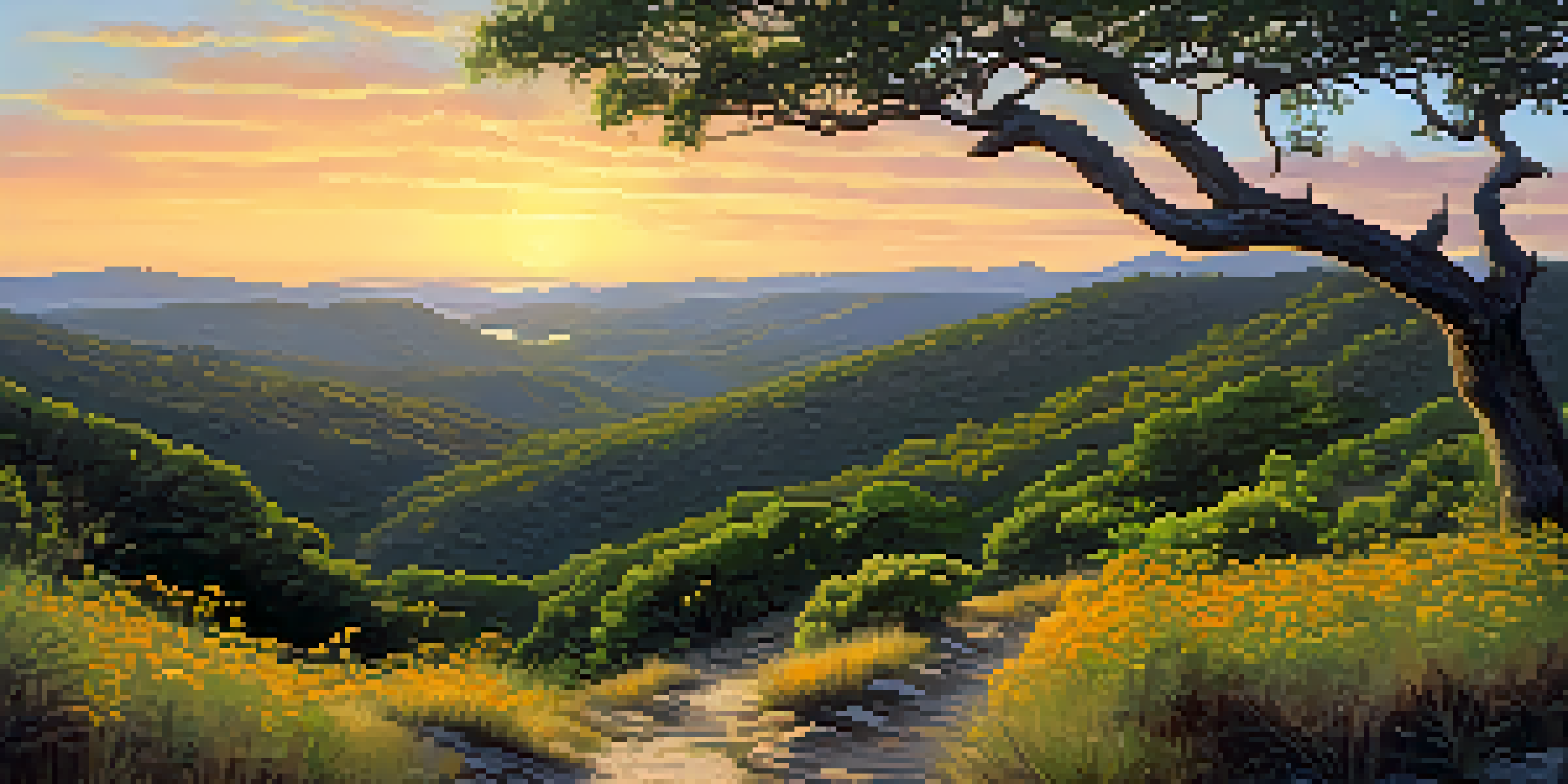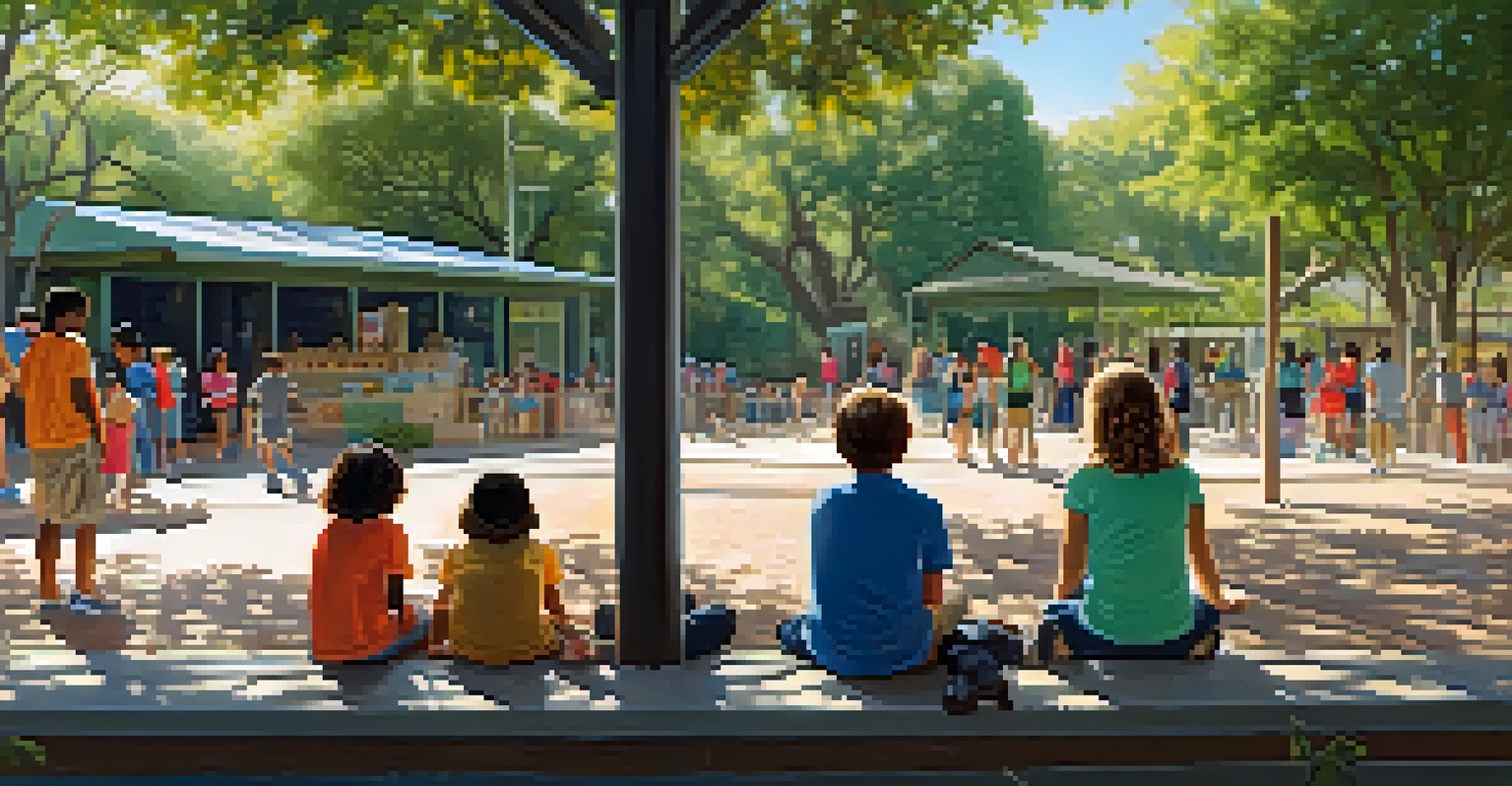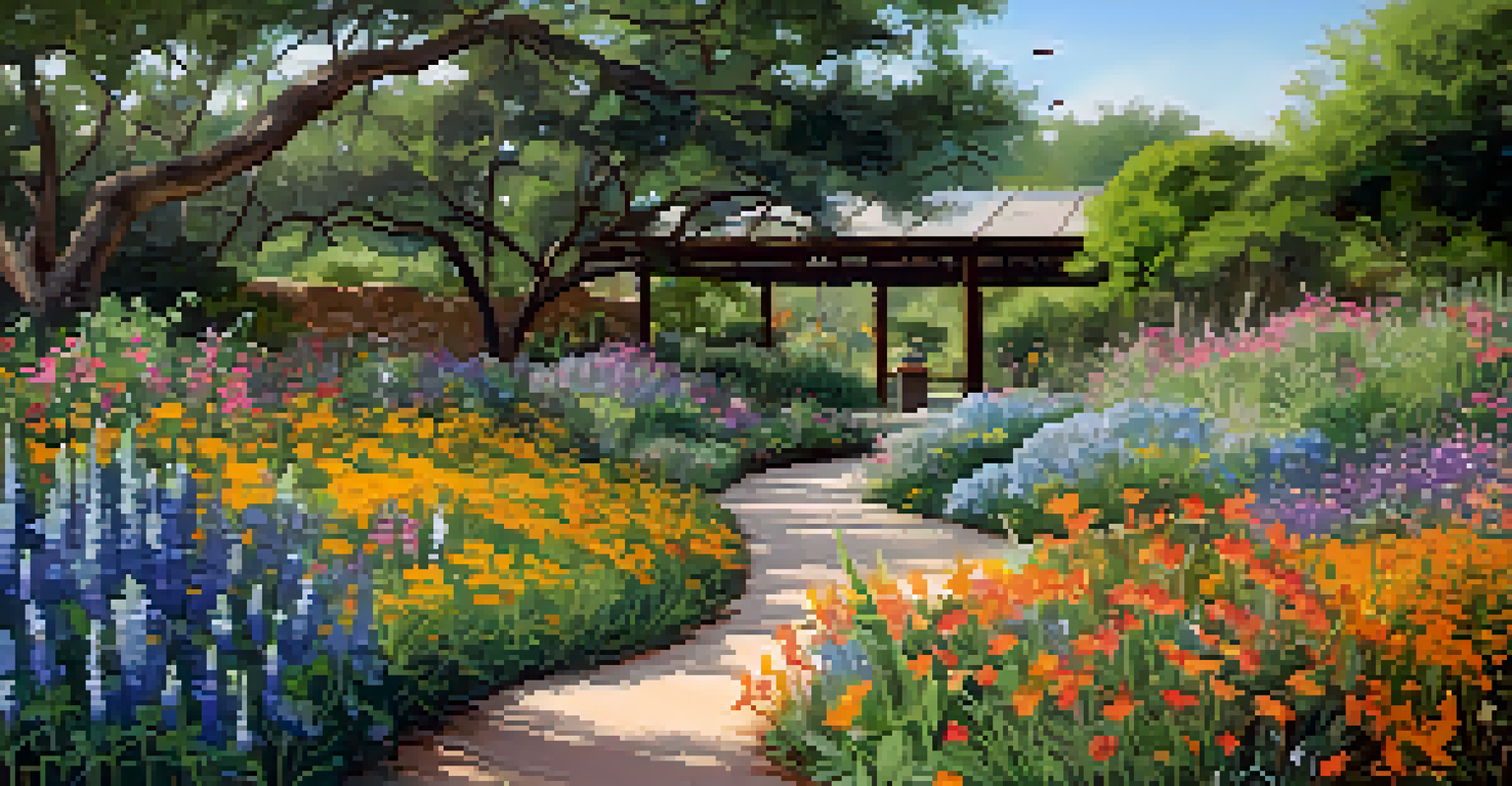Top 10 Local Wildlife Conservation Efforts in Austin, Texas

1. The Balcones Canyonlands Preserve: A Natural Sanctuary
Located just outside Austin, the Balcones Canyonlands Preserve is a vital habitat for endangered species like the golden-cheeked warbler. This area not only protects these birds but also offers stunning hiking trails and educational opportunities for visitors. It's a great example of how conservation efforts can coexist with recreation.
In every walk with nature one receives far more than he seeks.
The preserve spans over 28,000 acres, showcasing the beautiful Texas Hill Country. By preserving these natural landscapes, we ensure that future generations can enjoy the beauty and biodiversity of Austin's wildlife. Engaging local communities in stewardship is key to its success.
Regular volunteer days and educational programs help raise awareness about the importance of protecting these habitats. By participating, locals can make a tangible impact while deepening their connection to nature.
2. The Austin Zoo: A Rescue and Rehabilitation Center
The Austin Zoo is more than just a place to see animals; it's a rescue and rehabilitation center that focuses on providing care for wildlife in need. Many of the animals here are rescued from situations of abuse or neglect, making the zoo a critical part of Austin's conservation landscape. Its mission is to educate the public about these animals and the importance of wildlife protection.

Visitors to the zoo can learn about various species while supporting rehabilitation efforts. Each ticket purchased contributes to the care of these animals and supports ongoing conservation programs. It's a fun way to engage with wildlife while promoting awareness.
Conservation and Recreation Coexist
The Balcones Canyonlands Preserve demonstrates how conservation efforts can successfully integrate recreational activities, benefiting both wildlife and visitors.
The zoo also hosts various educational events and programs aimed at teaching younger generations about conservation. Through hands-on experiences, children can learn about the challenges wildlife face and how they can help.
3. Texas Parks and Wildlife Department: Statewide Initiatives
The Texas Parks and Wildlife Department (TPWD) plays a significant role in wildlife conservation across the state, including Austin. They manage numerous parks and wildlife areas, ensuring habitats are protected and species thrive. Their efforts include research, habitat restoration, and community engagement.
What we are doing to the forests of the world is but a mirror reflection of what we are doing to ourselves and to one another.
One of their notable programs is the Urban Wildlife Program, which focuses on creating wildlife-friendly spaces in urban settings like Austin. This initiative encourages residents to plant native species and create habitats that support local wildlife, blending conservation with city living.
By partnering with local organizations, TPWD extends its reach and impact. Their collaborative efforts help raise awareness and drive community involvement in conservation projects, making everyone a stakeholder in preserving Texas's natural beauty.
4. The Lady Bird Johnson Wildflower Center: Biodiversity Champion
The Lady Bird Johnson Wildflower Center is a stunning tribute to native plants and their importance in local ecosystems. This botanical garden and research center promotes the use of native flora, which not only supports biodiversity but also conserves water and reduces maintenance costs. It's a paradise for plant lovers and wildlife alike.
Through various educational programs, the center teaches visitors about the benefits of native plants and how they can create wildlife habitats in their own yards. The center also conducts research on plant species to ensure that conservation efforts are based on solid scientific principles.
Community Engagement is Key
Local initiatives like citizen science projects and volunteer days allow residents to actively participate in wildlife conservation, fostering a sense of responsibility and stewardship.
Their annual events, such as the Wildflower Festival, draw in crowds and raise awareness about the importance of preserving native species. By celebrating local flora, they inspire a deeper appreciation for the natural world in Austin.
5. The Central Texas Conservancy: Land Preservation Efforts
The Central Texas Conservancy is dedicated to preserving the unique landscapes of the region, ensuring that wildlife has a place to thrive. Their efforts focus on land acquisition and stewardship, protecting critical habitats from development. By maintaining these areas, they help sustain biodiversity in and around Austin.
Through partnerships with landowners and local governments, they work to create protected areas that benefit both wildlife and the community. These conservation areas often become places for recreation, education, and environmental stewardship. They promote a deeper understanding of the interconnectedness of ecosystems.
Volunteers play a crucial role in their initiatives, assisting with restoration projects and community outreach. This hands-on involvement fosters a sense of responsibility among residents, encouraging them to become active participants in conservation.
6. The Wildflower Center's Pollinator Program: Supporting Bees and Butterflies
The Wildflower Center also runs a dedicated Pollinator Program aimed at protecting essential pollinator species like bees and butterflies. These creatures play a critical role in our food systems and ecosystems, making their conservation vital. The program provides resources for residents to plant pollinator-friendly gardens.
By educating the public on the importance of pollinators, the program fosters a culture of stewardship and awareness. Workshops and events encourage people to create habitats that support these vital species, contributing to their survival.
Support for Endangered Species
Organizations such as the Austin Zoo and the Wildflower Center focus on protecting endangered species and their habitats through education and community involvement.
Additionally, the program collaborates with local schools to integrate pollinator education into the curriculum. This approach not only raises awareness among students but also empowers them to take action in their own communities.
7. The Blackland Prairie Restoration: Reviving Texas Ecosystems
The Blackland Prairie ecosystem is one of Texas's most endangered habitats, and efforts to restore it are underway. Organizations like the Blackland Prairie Conservation Partnership work tirelessly to revitalize these areas. This initiative focuses on restoring native grasses and plants, which are crucial for supporting local wildlife.
Restoration projects often involve community volunteers who help plant native species and remove invasive plants. This hands-on approach not only aids ecosystem recovery but also educates participants about the importance of local biodiversity. It's a win-win for both the environment and the community.

Through workshops and outreach programs, the partnership raises awareness about the significance of the Blackland Prairie. By connecting residents with their local ecosystems, they foster a sense of pride and responsibility towards conservation efforts.
8. Community Involvement: Citizen Science Projects
Citizen science projects are gaining traction in Austin, allowing residents to contribute to wildlife conservation efforts actively. Initiatives like the Texas Nature Trackers invite community members to help monitor local wildlife populations and habitats. This kind of involvement not only gathers valuable data but also engages residents in meaningful ways.
Participants often report their observations through user-friendly apps, making it accessible for everyone, regardless of their background. This democratization of science encourages a diverse group of people to take part in conservation, fostering a sense of ownership over local ecosystems.
By participating in these projects, citizens gain a deeper understanding of the challenges facing wildlife and the importance of conservation. This grassroots approach helps build a community of advocates dedicated to protecting Austin's natural heritage.